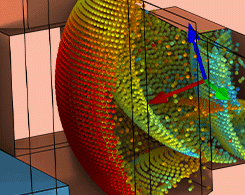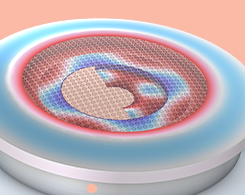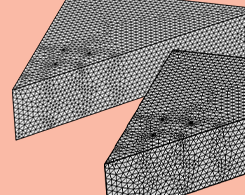Akustik & Schwingungen Blog-Beiträge

Geräuschübertragung bei Nacht
Warum breiten sich Geräusche nachts weiter aus? In diesem Blog-Beitrag beantworten wir diese Frage mit der Raytracing-Methode von COMSOL Multiphysics®.

Schallabsorbierende Ränder: Lokale vs. erweiterte Reaktion
Die Raumakustiksimulation ist ein wichtiger Schritt beim Design einer angenehmen akustischen Umgebung. Hier erfahren Sie mehr über die Features des Acoustics Module für die Raumakustiksimulation.

Modellierung einer akustischen Falle: Thermoakustische Strömung und Particle Tracing
Akustische Fallen werden in einer Reihe von biomedizinischen Anwendungen zur Manipulation von Zellen und Partikeln eingesetzt. Hier erfahren Sie, wie eine akustische Falle in COMSOL Multiphysics® simuliert werden kann.

Faltung und Auralisation für die Raumakustik-Analyse
Die Faltung wird in verschiedenen Gebieten für die Signal- und Bildverarbeitung, Statistik und mehr angewendet. Erkunden Sie hier 3 Methoden zur Durchführung von Faltungen in COMSOL Multiphysics®.

Modellierung der Erzeugung akustischer Energie in thermoakustischen Motoren
Da thermoakustische Motoren keine beweglichen Teile beinhalten, ist ihre Struktur sehr einfach. Hier erfahren Sie mehr über diese Motoren und wie Sie sie modellieren können.

Impulsantwort eines kleinen Smart Speakers in einem Raum
Das akustische Verhalten eines kleinen intelligenten Lautsprechers kann in der Software COMSOL Multiphysics® mit der integrierten hybriden FEM-Strahlen-Kopplungsfunktion modelliert werden. Hier erfahren Sie mehr.

Charakterisierung von piezoelektrischen Sensoren für die zerstörungsfreie Prüfung
Piezoelektrische Sensoren müssen sorgfältig entworfen und kalibriert werden. Die Simulation kann helfen, diesen Prozess effizienter zu gestalten…

Simulation der Windlast auf Seitentür und Spiegel eines Sportwagens
In diesem Blog-Beitrag analysieren wir mithilfe einer Large-Eddy-Simulation (LES) und einer Strukturanalyse die Windlasten und den Luftstrom an den Türen und Seitenspiegeln eines Sportwagens bei hoher Geschwindigkeit.
